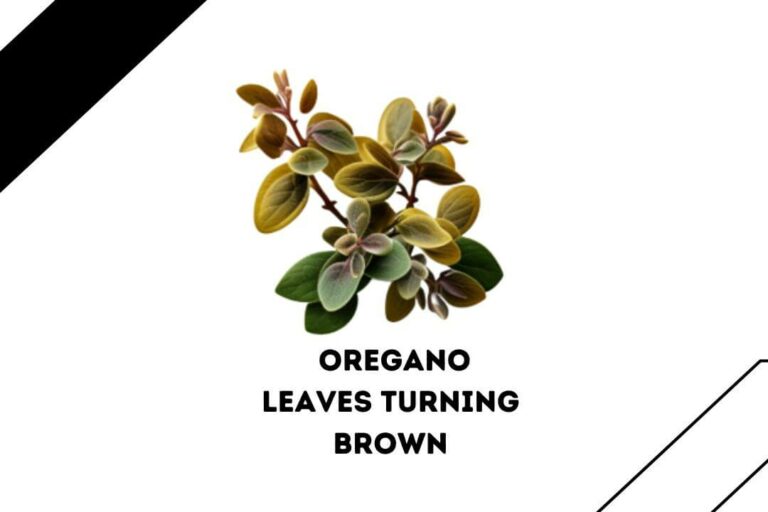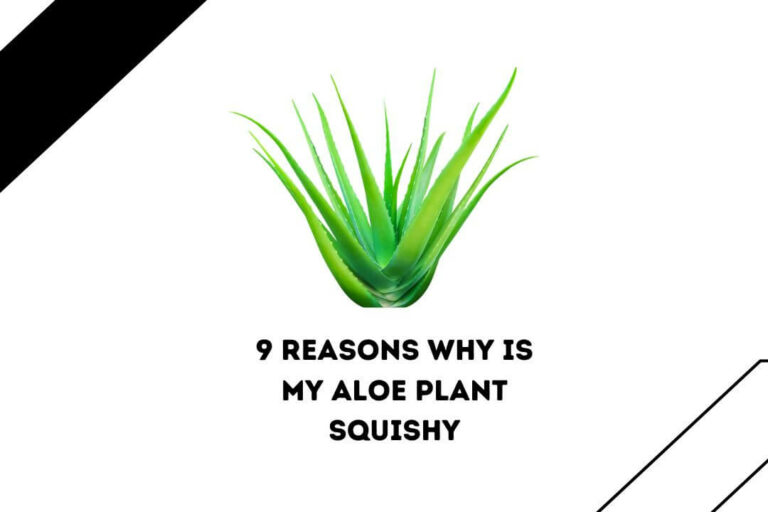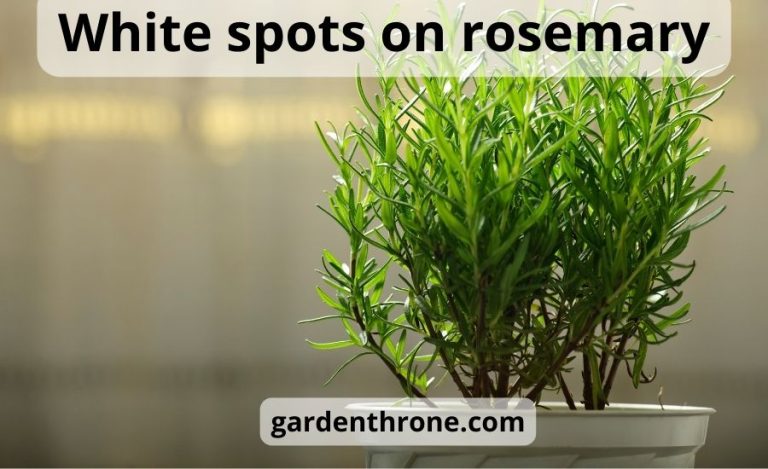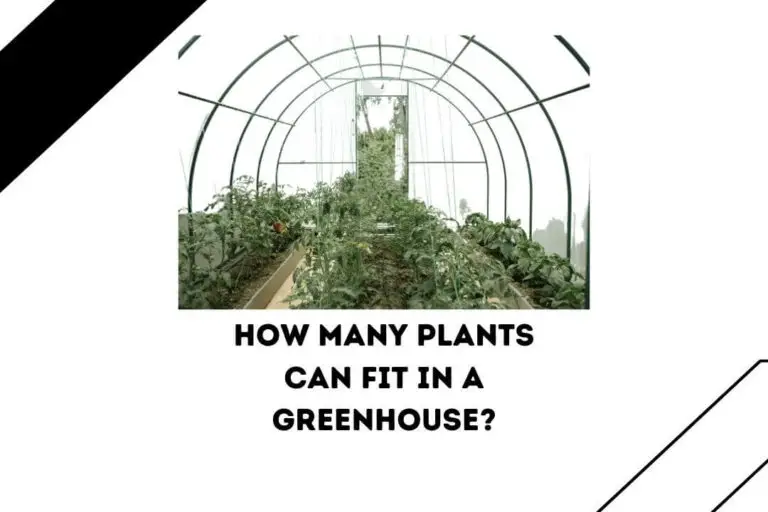If you’re an avid gardener, you might spend many hours nurturing and caring for your outdoor plants, just like me. However, if you notice your outdoor plant dying during flowering, you feel frustrated and disheartened.
Despite your best effort, your outdoor plant can sometimes die during flowering. This can be disheartening when you have put a lot of time and effort into creating a beautiful garden. This is why, in this article, I will explain why your outdoor plant is dying during flowering and what you can do about it.
I will also talk about the impact of dead plants on the overall look of your garden with tips on identifying the cause of plant death.
Later, you will learn how to prevent this from happening again and treat the most common issues that could cause outdoor plants to die during flowering. Let’s first begin with understanding the impact of dead plants on the overall look of your garden.
Impact Of Dead Plants on the Overall Look Of Your Garden
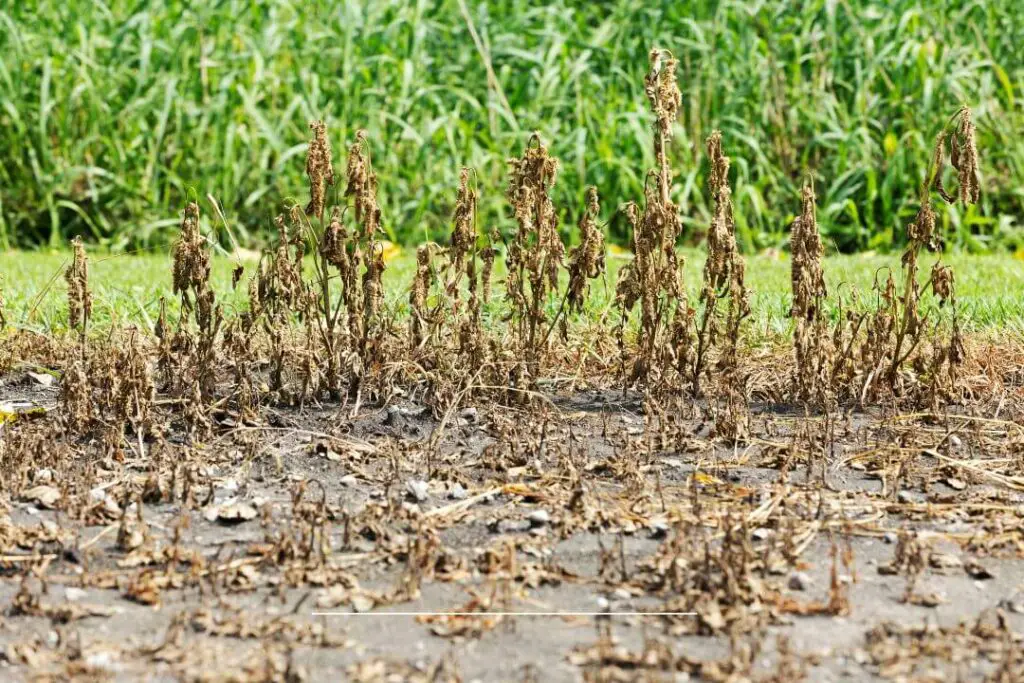
Dead plants can significantly impact your garden, making it look unkempt and uninviting, which can detract from the beauty of your outdoor space. It would help if you also prevented this from happening again because dead plants also attract pests and diseases, which can spread to other plants in your garden and cause further damage.
You must remove dead plants quickly and replace them with healthy plants to maintain the beauty and health of your garden.
This is why identifying the cause of plant death is crucial for preventing further damage to your garden. If you don’t know why your outdoor plants are dying during flowering, you won’t be able to take steps to prevent it from happening again.
5 Reasons Why Outdoor Plant Dying During Flowering
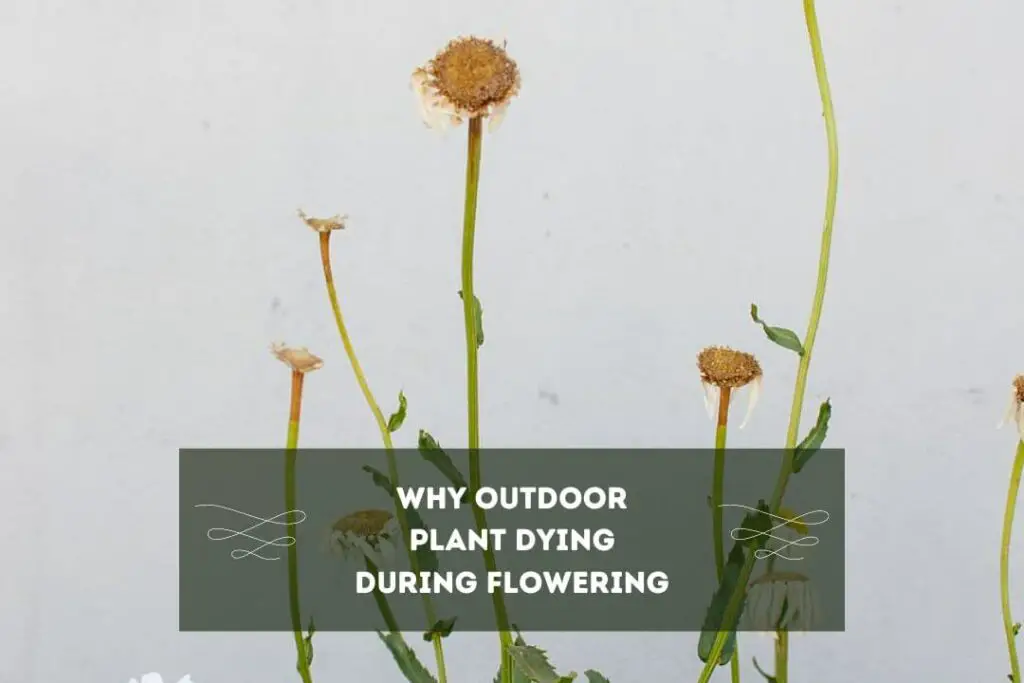
Lack of Water
You should know that water is essential for all plants to grow and thrive properly. Water is crucial for your plant’s growth and plays a vital role in the photosynthesis process in which your plant converts sunlight into energy/food. If you provide a proper amount of water to your plant daily, it can perform adequate photosynthesis and eventually die.
Your plants are outdoors and exposed to direct sunlight leading moisture to evaporate quickly. Check the soil to see if it feels dry or not. You should also know that yellowing leaves l, mold, and soggy soil are signs of overwatering.
You may be providing excessive water, causing your plant to be waterlogged and die. Other than this, if you are underwatering your plant, you should notice signs like wilting, yellowing leaves, and dry soil. Depending on the issue, you will need to adjust the watering frequency of your plant.
According to the Old Farmer’s Almanac, most outdoor plants require about 1 inch of water per week. It’s better to use a rain gauge or a watering can with a spout to ensure that you are providing the right amount of water.
Related Article: How to Water Plants with Sand on Top of Soil?
Pests and Diseases
Since your plant is kept outdoors, it is generally exposed to many insects. Maybe your plant is suffering from pest infestation. You should check for signs of pest Infestation on your dead plants. Many people have frequently complained about pest infestations and disease being the main culprit for outdoor plants dying during flowering. Some of the common pests that are known to affect outdoor plants during flowering are:
- Aphids
- Whiteflies
- Spider Mites
On the other hand, some of the common diseases that can affect your outdoor plants during flowering and cause them to die include:
- Powdery Mildew
- Black Spot
- Root Rot
Therefore, if you notice any holes in your plant leaves with sticky residue, it is suffering from pest infestations or diseases. You should see web-like structures if your plant suffers from Spider mites.
If pests and diseases also infest other plants, you should consider using insecticidal soap or neem oil to remove them to treat them. Also, ensure that you remove all the infected plant parts and then apply fungicides properly.
Do you know plants grown in a greenhouse are less susceptible to test infestations and diseases than those grown traditionally? However, if you’re considering building a greenhouse, you can read our article on how many plants can fit in a greenhouse for maximum yield.
Soil Issues
You already know that soil plays a crucial role in plant growth, providing nutrients, water, and air to the roots. Therefore, if your plants suffer from soil issues, they might eventually die or not grow & thrive efficiently.
Some of the most common soil issues that affect outdoor plants during flowering are nutrient deficiencies, soil compaction, & soil pH imbalances. You can identify soil issues by testing your soil with a pH meter or soil test kit. It would help if you also observed visible signs like stunted growth, yellowing leaves, or poor drainage.
If this is the issue, you can quickly treat it by adding organic matter like compost or manure to improve its fertility. It would help if you also considered aerating your soil to reduce compaction. You can also adjust the soil level using lime or Sulphur as required.
Temperature and Weather
If you live in a region where your plant is likely to experience extreme temperature changes like heat waves or cold snaps, it might be why your plant is dying. Sudden heat waves or cold snaps can stress your plant. In addition, weather events like heavy rain, strong winds, or hail may also damage your plant, causing it to be prone to diseases & pest infestation.
If your plant is suffering from weather or temperature-related issues that are stressing them, you will notice its leaves wilting and yellowing with stunted growth.
Since it can be tough to determine whether the temperature change or weather condition is affecting your plant, it is better to protect a plant during extreme weather events as a precaution/prevention.
If you don’t take action promptly depending on temperature and weather fluctuation for your plants and trees, you will notice them suffering greatly from many issues. Ultimately, you may see all plants dying at the same time. If you don’t want this to happen, I highly recommend you protect your plants properly from extreme weather and temperature events.
It is always better to protect your plant as a prevention method rather than waiting for it to get damaged by sudden weather events. Consider covering your plant using a blanket or tarps during a cold snap.
You can also use shading cloth during heat waves. Ensure that your plants are watered adequately during hot & dry days to prevent drought stress.
Nutrient Deficiencies
Lastly, Nutrient deficiencies can also cause outdoor plants to die during flowering. Nutrients like nitrogen, phosphorus, and potassium are essential for all plant growth and development.
If your plants are not receiving enough of these nutrients, they may become weak and susceptible to disease. In turn, this causes them to die out of suffering. It is better that you perform regular soil tests to determine the soil’s nutrient level.
If you don’t fertilize the soil with organic fertilizer or amendments like compost or manure from time to time, its fertility/quality will start to degrade over time.
5 Things You Can Do About It
Evaluate the Plant’s Environment
One of the first things you should do is evaluate the plant’s environment. Check to see if your other plants are receiving enough sunlight and water. Also, you should ensure that all plants are planted in well-draining soil.
Every professional and expert recovers to check for signs of pests or diseases to be on the safe side. It would help if you never hesitated to change the plant’s environment to prevent further damage.
Watering Techniques
You should follow proper watering techniques depending on the variety of plants and soil types. You must water your plant profoundly but infrequently. It would help to allow the soil to dry out slightly between waterings.
It would help if you always avoided watering, which can lead to root and other issues. Similarly, it would help if you prevented underwatering, which can cause stunted growth. Please go with a general recommendation. As per the rule of thumbs, you should take your finger about a few inches deep in the soil, and if it feels dry, you should water it.
Preventing Pest and Disease
You must prevent pest infestations and disease during flowering. You must use an organic method to achieve this. You can consider companion plants that repel pests like marigold garlic etc. It would help if you also thought about crop rotation and attracting beneficial insects to prevent pest infestations.
If your plant is suffering from pest infestation, you should always use a natural treatment like Neem oil or insecticidal soap to solve the problem. Using the chemical solution may harm your other plant’s soil quality and beneficial insects necessary for proper pollination, deterring pests, and many more.
Soil Maintenance
Maintaining healthy soil is essential for the growth and development of outdoor plants during flowering. I recommend you regularly test your soil and amend it with organic materials like compost or manure to improve soil health. It would help to avoid over-fertilizing, which can lead to nutrient imbalances and other issues.
Temperature and Weather Management
Proper temperature and weather management are crucial for the health of all outdoor plants during flowering. This is why you must provide shade cloth during hot and dry days.
You should also offer tarps and blankets if required during winter months. If you don’t provide proper water regularly, especially when the season is hot and dry, your plant may suffer from drought stress.
Conclusion
As of now, you know why your plant is dying out of nowhere during flowering. Since there can be several factors responsible for outdoor plants dying during flowering, it is recommended that you follow the right approach when trying to find out the actual culprit.
After identifying the issue, you should take action promptly. In this article, I have given my best to give you everything you need so that you can make the necessary changes and prevent this issue from recurring.
I hope you like this article, and if yes, you must share this. Your share will help many people care for their outdoor plant properly and prevent it from recurring, especially during flowering.
You should also check our other helpful guides that are shared on this website on plant care and management. See you in the next post, till then take care and goodbye.

